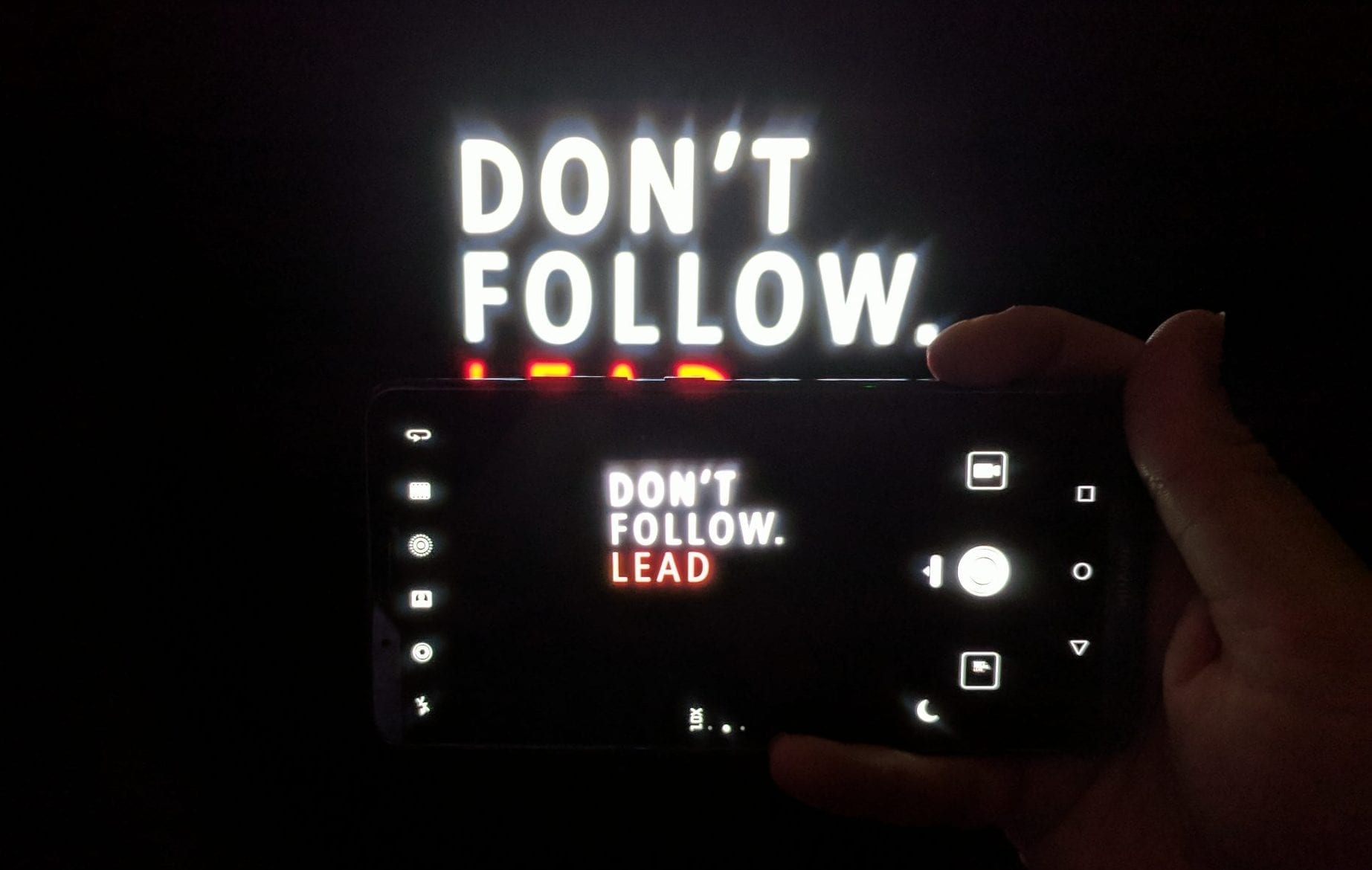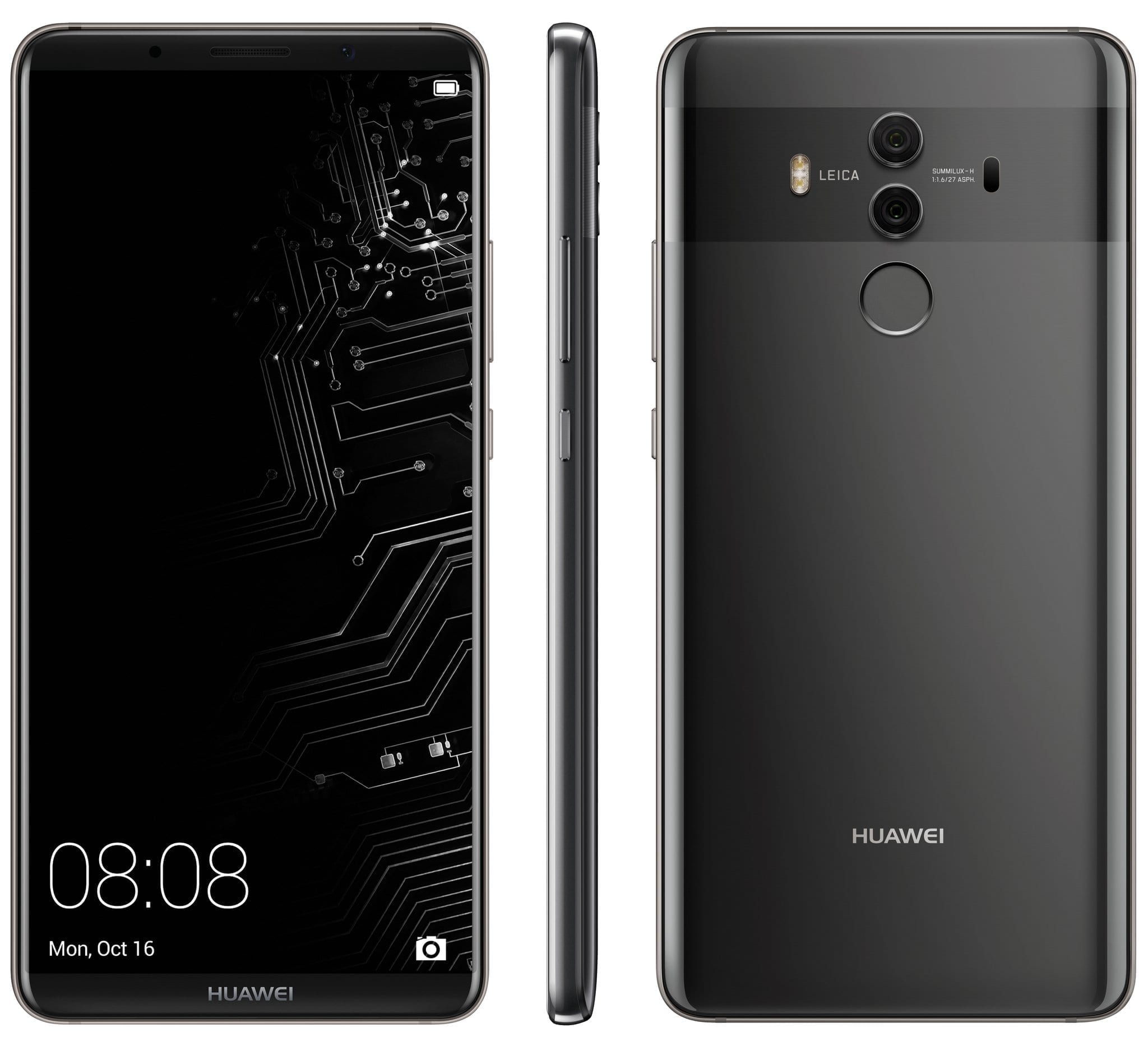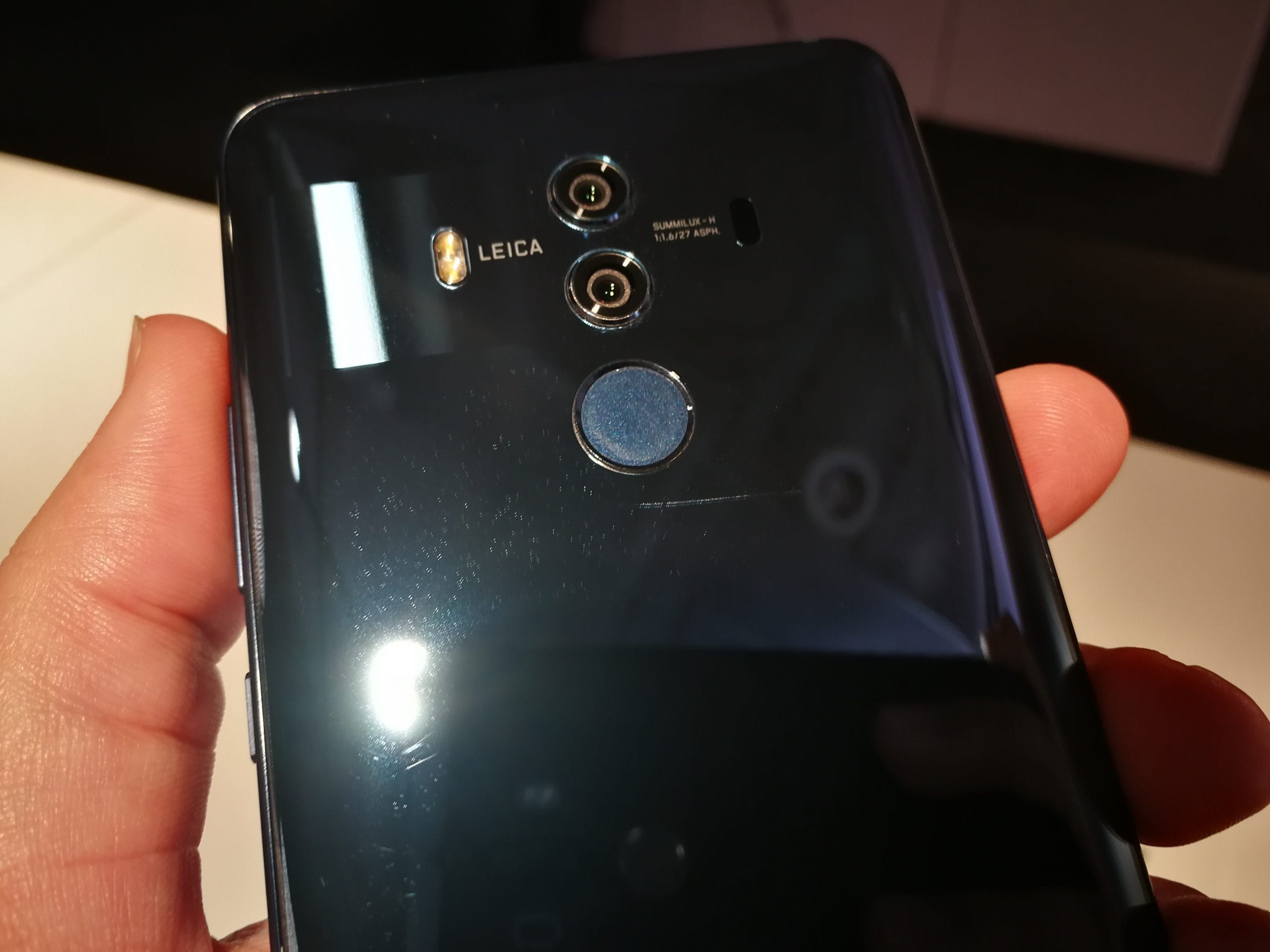
Huawei Mate 10 Pro Hands-on: First impressions of Huawei’s brand new flagship
I’ve seen the future, and it’s not a smartphone! At least that’s the marketing that Huawei will be using to sell the brand new Mate 10 handsets announced today. In fact, it could very well be the smartest phone to date.
The Mate 10 Pro accompanies a Mate 10, a more humble (and cheaper) Mate 10 Lite and, at the time of writing as yet unconfirmed, Mate 10 Porsche Edition.
I was lucky enough to get some time with the Mate 10 Pro ahead of the launch event in Munich today, which is the model that Huawei will focus on in Europe. It’s unclear if the Mate 10 will be released, and the Porsche Design is almost certainly going to have a limited release.
The Mate 10 Lite is the least likely of all to make an appearance here, at least initially.

Given the latter half of 2017 has been about high-end phones with near bezel-less displays, it’s likely Huawei decided the Pro was the only model to get behind in those regions, and there are no complaints from me.
I know I’ve been a little skeptical of the desire to get rid of bezels entirely, but the Mate 10 Pro minimises the bezels top and bottom, and to the sides, but without curving around you can still grip the phone fairly easily and not obscure the display.
From 9 to 10
The Mate 9 should be proud of the fact it’s the first phone in goodness knows how long that I’ve carried around almost every day since getting it at last November’s launch. Very few phones stay in my hands for that length of time, given how many handsets I go through in any given year.
It has earned this rather exclusive award for a number of reasons. It has a great reception, a large and clear display (even if only full-HD resolution on my non-Pro model), stunning battery life (a must-have phone for those with battery anxiety issues for sure), a powerful processor, plus a myriad of great camera options.
It’s also a phone that even almost one year on still runs smooth, just as Huawei said it would – but nobody probably actually believed.
I’ve also been using the Mate 9 regularly as a portable hotspot to connect other devices around the home and on my travels, without it breaking into a sweat and depleting the battery in no time.
Frankly, the Mate 9 has been the perfect workhorse and until I saw the first leaked images and specs of the Mate 10, I was wondering exactly how Huawei could top it.
Now, fingers crossed, I hope Huawei can retain this award for next year.

If looks could kill
My thoughts of the Honor 8 and Honor 9, with the multi-layered glass back, are well-known. I particularly love the blue models, and the Mate 10 Pro also comes in a very similar hue, amongst others, and sports the same highly reflective back glass.
Bar a horizontal stripe through the dual camera setup, the (Gorilla Glass 5) back is as shiny as things come. Yes it will probably be a total fingerprint magnet and, yes, you’ll probably have little choice but to invest in a protective bumper or transparent case (anything more would be sacrilege) , but there’s certainly no way that anyone can say the Mate 10 Pro is boring – a valid criticism of the Mate 9.

In my opinion, Huawei has done a great job of making the Mate 10 Pro look like nothing Huawei has done before. Okay, so that’s subjective, but I doubt many can disagree that it’s a good thing the phone has been slimmed down, especially without compromising on the battery.
The Mate 10 Pro still packs a 4,000mAh battery, putting it ahead of the competition and bucking the trend to go for smaller batteries when reducing handset sizes. With a less power-hungry chipset, the Mate 10 Pro should really do well in real-world use, especially with its new AMOLED display.
Given the problems Samsung, and now Apple, have had with batteries, a large battery in a small phone may set alarm bells ringing, but Huawei has already thought ahead and obtained certification – a world’s first – to prove the battery has been tested to a recognised standard for safety.
With continued support for Huawei’s Super charging fast-charging system, Huawei told me that the phone can gain a 60% charge from zero in just 30 minutes. Not bad for such a large battery, and apparently the larger capacity actually helps speed up the initial charging rate.
Bezels are now reduced to a minimum, and the 6-inch 18:9 ratio screen (1,080 x 2,160 pixels) is a proper rectangle with no rounded edges, or notches. That’s a good thing. HDR 10 is another good thing.
The problem Huawei has now created for itself is that it leaves me wondering what it will do with the P-series line next year. The Mate 10 is highly pocketable, so a smaller phone seems rather unnecessary.
But as you read on, you might come to a similar assumption that Huawei is likely looking to pitch the Mate 10 series at the highest end of the market, with a heavy emphasis on business users. A high price will likely rule this out as a contender for a lot of people looking to buy a high-spec phone, but it would be a shame if a lot of people miss out because of this.
Certainly Huawei will promote many features for business, including one impressive feature that I’ll mention further on, and possibly more things in the form of a tie-up with LinkedIn, Montblanc and others that have been rumoured over the last few days.
Think Galaxy Note for the Mate line, and Galaxy S for the P-series from now on.
An intelligent phone
After Huawei unveiled the Kirin 970 chipset at IFA last month, The Mate 10 and Mate 10 Pro was clearly going to be utilising some of the Artificial Intelligence features the company spoke of.
Recently Google made a big thing of AI for its new Pixel phones, and if you think it’s all just a gimmick cashing in on current trends and talking points, think again.
The Mate 10 Pro not only ups the game in terms of CPU and GPU performance with the latest chipset, but also comes with the first dedicated neural processing unit (NPU) that can do many clever things a normal CPU or GPU can’t.
Things like using machine learning to recognise what’s in a picture, and doing it at lightning speed, or recognising text to translate it into another language the fly. If you’re going to say that other devices can do this, that’s true except for the fact that all of this is without needing an Internet connection to process things offboard in the cloud, as apps like Google Photos require.
This machine learning also continues on from the work put into the Mate 9 to optimise the system based on your usage, making it quicker to load apps you use regularly and keep things in memory as needed. The Mate 10 Pro aims to become even more intelligent at learning, to keep the user experience as good as when the phone was new.
Given the Mate 9 did a good job in this area, I have high hopes for the 10.

Be more productive
Despite the Mate 10 Pro being just as appealing to someone looking at a Galaxy S8, iPhone X, LG V30 or Pixel 2 XL, Huawei is sure to push this more for business.
One feature that will help do this is its optional connectivity to a monitor, via HDMI lead, to offer a Microsoft Continuum/Samsung DeX style desktop environment. In other words, a fully windows based environment, that can be controlled from any Bluetooth keyboard or mouse, or the phone itself used as an input device.
The phone can also be set to show notifications on the handset only, so you won’t be interrupted or have messages displayed for all to see if used for a business presentation. Alternatively, you can deliberately mirror just the phone display to offer a great home cinema experience.
It’s a very simple one cable solution (which may or may not be bundled in some markets), but still every bit as powerful as the alternative solutions. Looking back to when Motorola launched the Atrix at the start of the decade, it’s impressive to see how things have advanced (and how far ahead of its time Motorola actually was).
With the latest generation 10nm Kirin 970 and 6GB of RAM, it should all run very well indeed. However, as of now, I’ve not had the opportunity to see it actually running and will write about this more in a follow-up article.
Heart and Emotion
The latest Emotion UI, branded as version 8 on the Mate 10 Pro, is built on Android Oreo (another first for Huawei, although Mate 9 users should be getting Oreo soon after). It allows automatic split screen viewing of apps, so if you’re watching a video and a message comes through, the picture can reduce automatically so you can see – and respond – as required.
Other features include a movable ‘dot’ that allows you to replace the navigation keys and go home, back and open recent apps from anywhere on the screen. I am not convinced I’d use this any more than the other movable docks that manufacturers have offered previously (including Huawei) and this seems like a feature that was added just to show something ‘new’. But, hey, you don’t have to enable it.
With the fingerprint sensor on the back, it perhaps offers an alternative for anyone that has used a front-mounted sensor that allows for various controls from short or long presses, or swipes.
Until I’ve had a chance to have a proper go with the phone, I can’t really comment on all aspects of EMUI 8. There will likely be many new options, improved theming, maybe some more hidden developer options and other optimisations. I’ll go into more depth on that later too.

Smart Camera
The Mate 9 (and the Huawei P10) each came with a decent Leica-branded dual-camera setup, utilising optical image stabilisation and comprising a 20-megapixel monochrome and 12-megapixel RGB sensor. There was even a pretty decent 2x near lossless zoom mode.
This time around, the pixel resolution remains the same (contrary to many rumours) but now has a f/1.6 aperture and vast improvements to focusing, promising to get a lock much faster than before.
But the biggest improvement comes from the artificial intelligence added in to the camera app, which means an all-new level of scene recognition. Simply by moving the viewfinder around, the phone detects loads of different scenes, so even the most avid photographer may have little need to invoke the Pro camera mode.
I was shown a range of scenes in the handset demonstration area, and each time I pointed the camera at something, the phone displayed an icon to show what it had detected, so I knew the camera parameters were now set automatically.
There are so many modes that they’ve even got separate modes for leaves and flowers, ideal for macro-photo lovers that take lots of photos outdoors.

Another big improvement is the use of AI to improve portrait photo taking, with less artifacts and halos around heads and other objects in the foreground and background. The phone detects what is in the image to better work out what parts to blur and what to keep sharp, which should mean vastly improved bokeh.
Camera aficionados can still play with all the usual manual settings, and on the video side the use of H.265 compression on 4K video that caused some issues last year (thanks to Google not processing the video when backing up to Google Photos or uploading to YouTube) has now been fixed, although we can probably thank Apple for that. Once Apple utilised H.265 it seems Google decided it was time to support it too. Go figure.
Of course, the proof of the pudding is in the tasting and it will take a good test of the phone to determine if the camera really is as good as Huawei says. But from my admittedly short time testing, I think it’s going to be a good incremental upgrade and I look forward to posting photos and video in the coming weeks and months.
Connectivity
Huawei has been at the top of the game for some time when it comes to connectivity. It’s hardly surprising given its heritage on the infrastructure side and producing mobile broadband devices for what seems like forever.
But this year it fell behind as Qualcomm took top spot with the launch of its X16 modem in Snapdragon 835 devices (even if not every device actually utilised it), with Gigabit speeds of 1000Mbps down and 150Mbps up.
Before the year ends, Huawei will have got back into first place with the first Cat 18 LTE modem, offering speeds of 1.2Gbps down (and 150Mbps up), along with support for more carriers aggregated at once (in layman’s terms; it will make even better use of existing networks, and cope better in fringe areas and congested locations).
That’s not all; there are dual 4G SIM slots and dual VoLTE support. Only one offers the fastest 4G+ speeds, but there’s no doubt that two 4G slots will make it more practical than ever to have two SIMs on the go.
It’s too early to tell if all UK networks will be supported on the VoLTE side, but as soon as I know I’ll update this post accordingly.

Mate 10 vs Mate 10 Pro
The specification differences between the two models are relatively minimal, with the former having more traditional bezels and a lower resolution display. The Mate 10 also has just 4GB of RAM compared to 6GB on the flagship, while storage comprises of 128GB on the Pro and 64GB on the standard model.
The 64GB Mate 10 has a microSDXC card slot, with the usual choice of using the second slot for a SIM or memory card. The Mate 10 Pro is 128GB with no expandability.
The Mate 10 Pro is the only phone of the two to have an IP67 rating for water and dust resistance, which could well be the deciding factor.
As the Porsche Design model wasn’t shown ahead of the launch today, it’s not clear what differences there will be, but at a guess I would expect more internal memory and possibly no memory card slot. (update: yes, it has 256GB).
Pricing and availability
At the time of publishing, it was unclear how much any of the new Mate 10 phones will cost (expect a lot) and which, if any, UK networks will be selling the phone. EE informed me that it isn’t ranging the Mate 10 Pro, and last year it was just Three that took on the Mate 9.
It’s quite likely, therefore, that if you want this phone you’ll have to go down the SIM-free route. But that’s usually the best option anyway, giving total freedom to swap and change networks as you please.
For now I am looking forward to using the phone properly and preparing for a full in-depth review – which, as always, will concentrate in particular on network and camera performance.
If you have any specific questions about the Mate 10 Pro, or indeed the other variants, please put them in the comments below or at me on Twitter.
